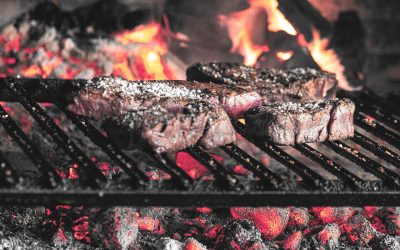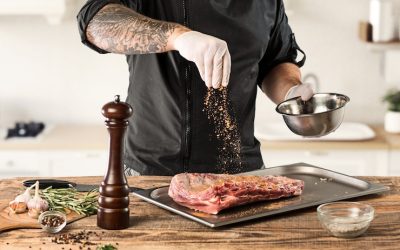A good fresh beef steak has a nice bright red color. They come in different shapes and sizes, and each steak has its own characteristics. Among other things, they affect the taste and tenderness of the meat. Other factors, such as the breed, the animal’s diet, the conditions of keeping and the way the meat is processed, also play an important role in the quality of steaks.
Marbled beef is the most famous meat delicacy in the world. It got its name due to its close resemblance to the stone itself. After all, a cut of this meat is also dotted with various veins. This effect is achieved due to the presence of thin layers of adipose tissue in this product, which are found in the muscular system of a dead animal, so a piece of meat is surprisingly juicy and tender.
The marbling of fat and the percentage of fat are partly determined by the lifestyle of the cattle. In particular, the diet and freedom of movement.
Tomahawk: origin, characteristics
This exquisite piece of meat is very similar to tomahawk in shape and size.
Tomahawk originated in Australia, where it is produced from bulls obtained by crossing such valuable breeds as Black Angus and Wagyu, raised in the wild and fed exclusively on grass, except for the last 2-3 months before slaughter, at which time the cattle consume only the highest quality wheat and corn.
This way of growing makes the meat of animals extremely tender and sweet, characterized by a “marbled” appearance due to intramuscular fat, and a truly unique taste.
Tomahawk: when measurements count
Beef cuts can weigh more than a ton and are used to produce steaks weighing more than 2 kg and 3 fingers thick.
A tomahawk is a large piece of meat obtained from a beef tenderloin (the part between the first and fifth dorsal vertebrae) from which the rib has not been cut, which, after being cleaned of fat and cartilage, can reach approximately 30 cm.
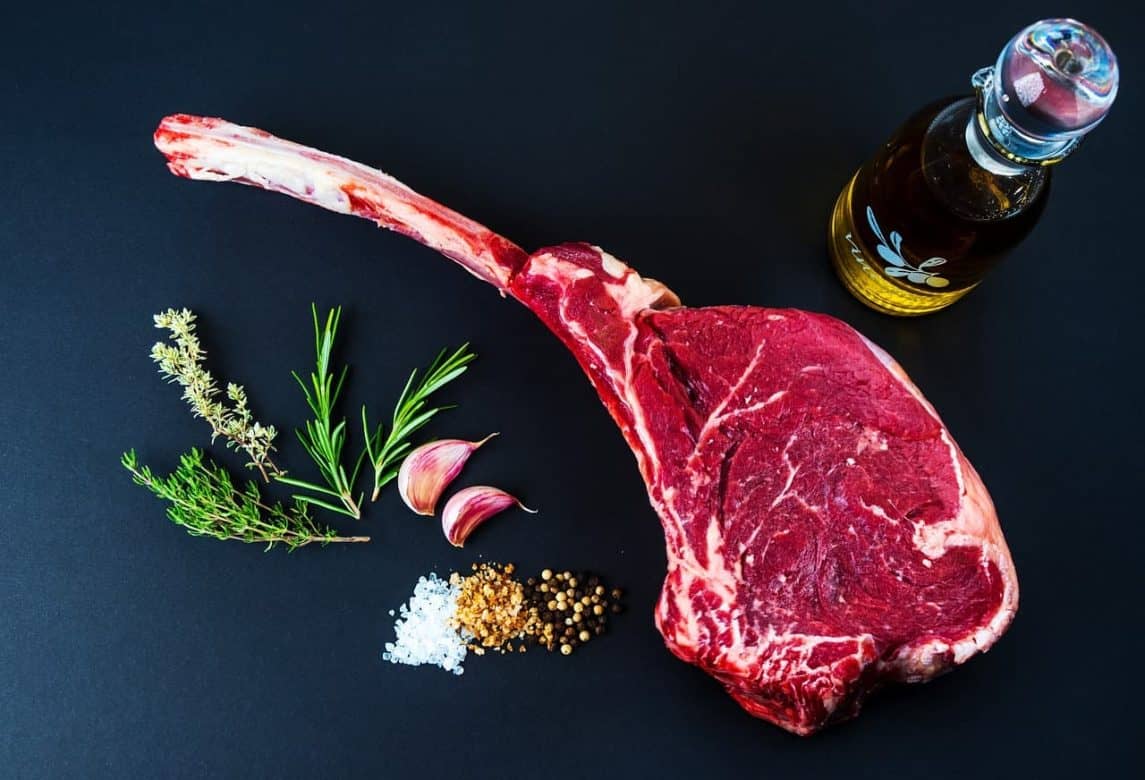
This giant steak, which takes almost a month to mature, reaches truly unique heights of flavor, tenderness and juiciness.
Ribeye steak
Ribeye steak is a tender, tasty piece of meat with a fine structure. High-quality ribeye has a pleasant fatty streak. In addition, a thick fat crust runs through the steak. The ribeye is located in the front of the back and is available as a whole ribeye or as a steak. The steak can be cut by thickness or by weight.
Steak COTE DE BEAUF
Côte de boeuf is a fresh steak cooked on a barbecue. It is simply a boneless ribeye and has the same characteristics. The steak also comes from the front of the back, the so-called beef rib. The bone is one of the beef ribs. The thickness of a steak similar to a cock-eye is determined by the presence of the bone, which makes it quite thick.
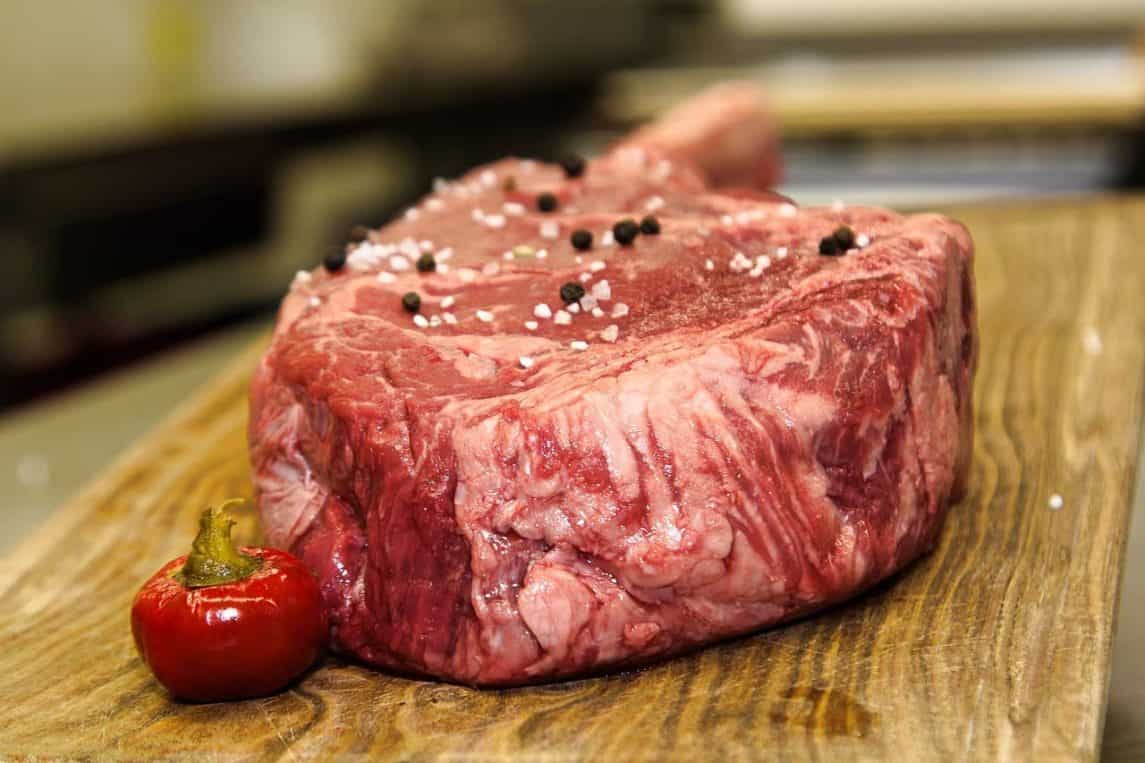
ANTRECOTE
The entrecote comes from the back of the beef, around the sixth or seventh rib. It consists of several muscles. These individual muscles are separated from each other by tendons, fat, and connective tissue, which gives the meat its marbled appearance. There is also a thicker strand of fat through the entrecote. This intramuscular fat prevents drying out during roasting or grilling. The entrecote is cut slightly forward between the neck and the rib. The rib eye, on the other hand, comes from the main rib slightly behind. Either way, the high-quality meat, which is also nutritionally high in protein, is framed by the main rib cap, which is richer in fatty tissue.
TENDERLOIN
The tenderloin is the most tender part of the meat with a very thin structure, as cattle make little use of this muscle. It is a lean meat that usually contains few fatty streaks. A whole fillet consists of a head, middle and tail. The slightly thicker middle part is called the chateaubriand. It is usually used to cut steaks called tournedos or fillets. The fillet is at the level of the entrecote in a beef tenderloin.
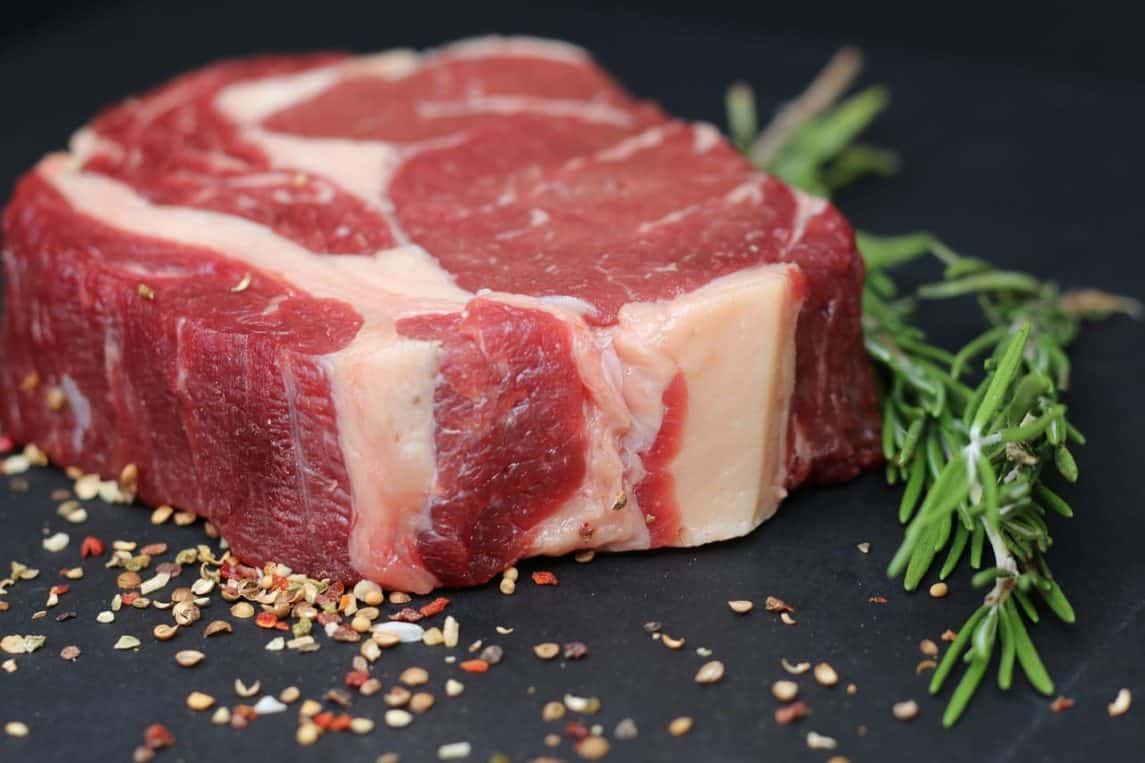
BAVETTA
A bavette is a rather flat and elongated piece of meat from the side of a cattle, i.e. the lower part between the buttock and the breast. A whole bavette weighs about 1-1.5 kg and can be used to cut steaks. Bavetta is a meat that lends itself well to processing. As a result, the meat has a rough structure and is incredibly tasty. Good bavette marbles well, which gives the meat even more flavor.
T-bone steak
The T-bone steak is a true classic. It is recognized by its characteristic T-bone and is one of the most popular cuts of steak. T-bone steak is cut from the back of the back (loin). The cut consists of two different muscle strands that are separated by a bone: on the one hand, the fillet, which is quite small in T-bone steak, and on the other hand, the roast beef.
Conventional or organic beef?
Organic farming is much better not only for the animals themselves, but also for the quality and taste of the beef.
But what does organic beef really mean? An important criterion for organic quality is animal welfare. This means that cattle have more space than in conventional facilities and can move freely. In addition, contact with other animals is very important for cattle, as they are herd animals.
The second criterion is feeding. At least 60% of the feed should come from own or regional cultivation. They are mainly fed with roughage such as grass and hay. Additional feeding of concentrated feed is strictly limited in organic farming. Organic cattle are fattened slowly, which has a decisive impact on meat quality.
Recent Posts
- Impressive steaks in restaurants
- Lovers and connoisseurs of marbled beef steaks
- Dress for Success: What to Wear to Ruth’s Chris Steak House
- What is the history of the origin of the steak. The dish comes from antiquity as it has changed over time
- Aussie Beefsteak: Cooking with Vegas Online Casino Star
About Beef Steak House
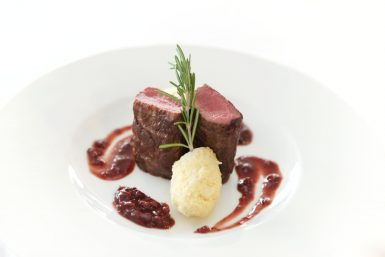
Beef Steak House is a legendary establishment of the famous international chain. This real man’s materia has become a kind of Mecca for fans and connoisseurs of American marbled beef steaks.
